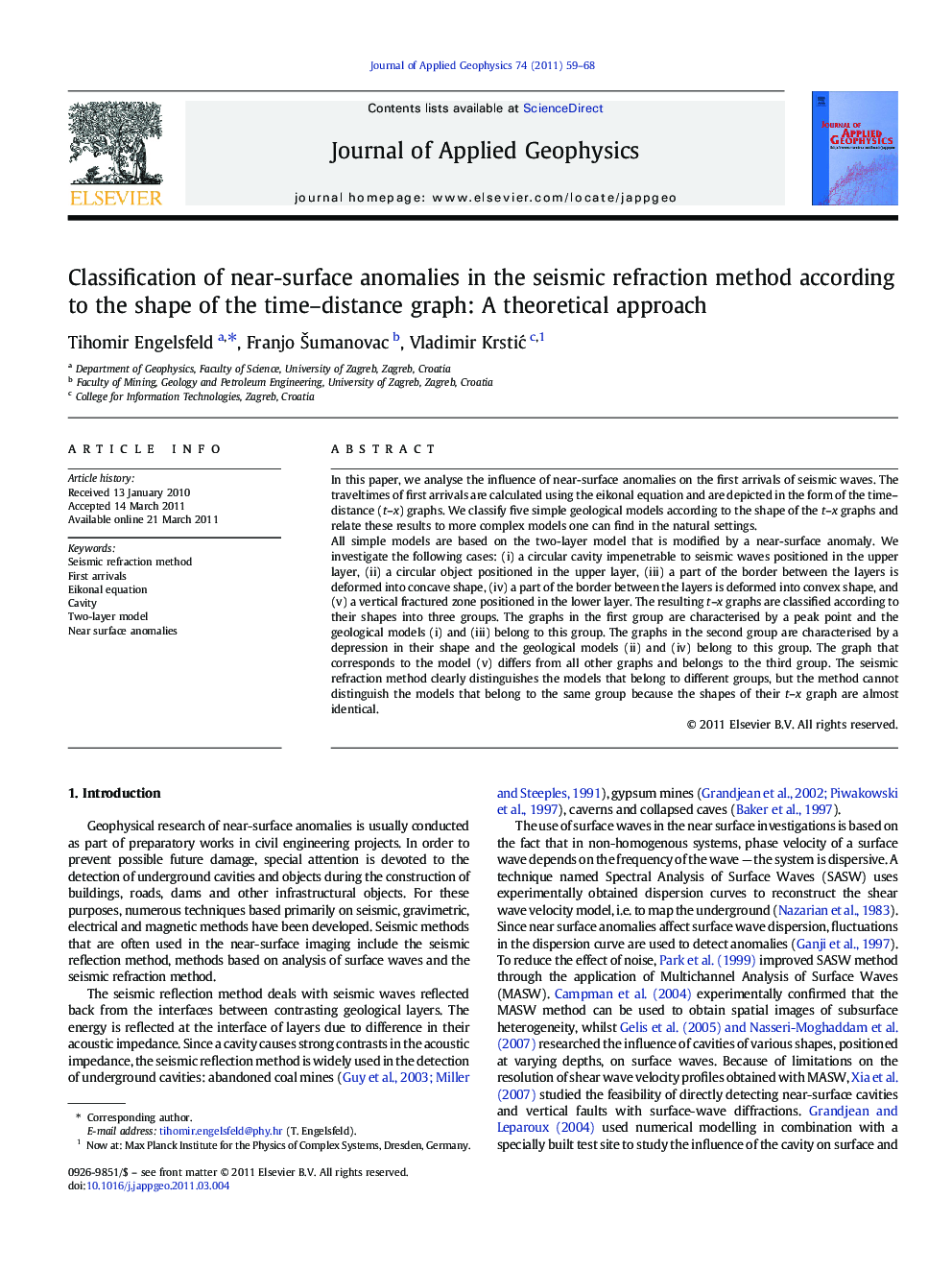| Article ID | Journal | Published Year | Pages | File Type |
|---|---|---|---|---|
| 4740791 | Journal of Applied Geophysics | 2011 | 10 Pages |
In this paper, we analyse the influence of near-surface anomalies on the first arrivals of seismic waves. The traveltimes of first arrivals are calculated using the eikonal equation and are depicted in the form of the time–distance (t–x) graphs. We classify five simple geological models according to the shape of the t–x graphs and relate these results to more complex models one can find in the natural settings.All simple models are based on the two-layer model that is modified by a near-surface anomaly. We investigate the following cases: (i) a circular cavity impenetrable to seismic waves positioned in the upper layer, (ii) a circular object positioned in the upper layer, (iii) a part of the border between the layers is deformed into concave shape, (iv) a part of the border between the layers is deformed into convex shape, and (v) a vertical fractured zone positioned in the lower layer. The resulting t–x graphs are classified according to their shapes into three groups. The graphs in the first group are characterised by a peak point and the geological models (i) and (iii) belong to this group. The graphs in the second group are characterised by a depression in their shape and the geological models (ii) and (iv) belong to this group. The graph that corresponds to the model (v) differs from all other graphs and belongs to the third group. The seismic refraction method clearly distinguishes the models that belong to different groups, but the method cannot distinguish the models that belong to the same group because the shapes of their t–x graph are almost identical.
Research highlights► We analyse the influence of near-surface anomalies on first arrivals. ► First arrivals are numerically calculated using the eikonal equation. ► We relate first arrivals to the propagation of seismic waves. ► Different geological models might result in almost the same first arrivals.
